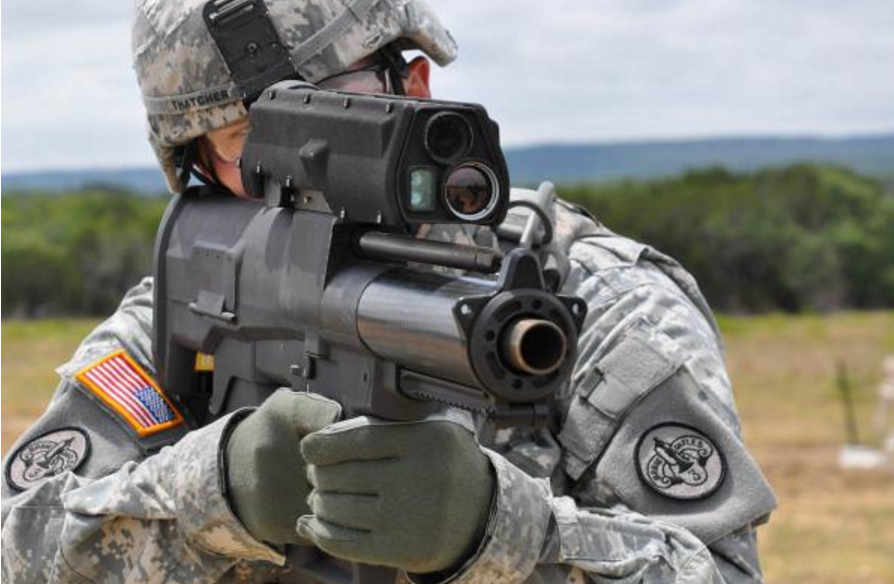Behind the Battle over the Army’s Controversial New ‘Punisher’ Gun
This scary high-tech grenade launcher definitely serves its purpose, but do the pros outweigh the cons?


The U.S. Army is currently taking flak from the Pentagon over their failure to issue a high-tech new grenade launcher to our troops.
Nicknamed “The Punisher,” the XM-25 Counter Defilade Target Engagement System was developed and designed by Orbital ATK and Heckler and Koch to kill enemy combatants behind cover who are shielded from ordinary gunfire.
According to Popular Mechanics:
“The XM-25 calculates the distance to an enemy fighter hiding in a doorway, bunker, or behind a row of sandbags and then can fire a 25-millimeter grenade toward the target. The grenade is programmed to travel past the target and explode in midair, peppering the enemy from behind with lethal shrapnel.”
The weapon performs as it should, but there are multiple problems preventing it from seeing regular action. The plan was to put “The Punisher” in the hands of one out of every nine infantrymen, but that would mean removing an M4A1 carbine out of the hands of a squad member and replacing it with a weapon that can’t be used in close quarters.
Another issue arose in 2013 when a soldier was injured as the weapon misfired two grenades at simultaneously, neither of which detonated because of safety mechanisms. Still, that was enough reason to yank all XM-25’s from all Army personnel for redesign.
This may have lead to the third big problem, which is its ever-growing cost. Popular Mechanics reports that “between December 2014 and 2017, the cost of the weapon somehow more than doubled from the original $41,000 to $93,000. An M4A1 carbine costs the Army about $3,000 with all the bells and whistles attached.”
Additionally, the XM-25 weighs twice as much as the M4A1 loaded and unloaded, which isn’t something any soldier will be thrilled about.
With all of these drawbacks in mind, it’s understandable that finding the right place for this weapon to be optimally utilized is difficult. But considering its capabilities, let’s hope the Army figures it out soon.
